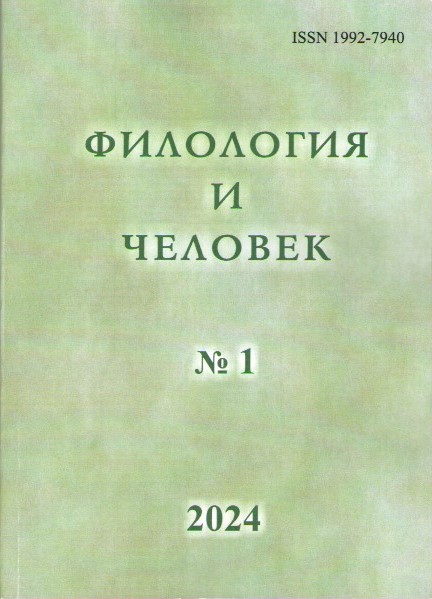Symbolism of Numbers in Numeral Phraseological Units of the Russian and Chinese languages
Abstract
The article highlights the results of the analysis of the symbolic potential of numbers in Russian and Chinese phraseological units. The phraseological units of each language reflect the process of development of the national culture: beliefs, cultural values, stereotypes. Numerical phraseological units comprehensively reflect the mentality of the Russian and Chinese peoples: with the help of numbers, the personal characteristics of a person are expressed. The world functioning and its processes are described. Comparison of phraseological units of different languages allows us to identify common and unique features of categorization and conceptualization in linguistic pictures of the world. A comparative analysis of the specifics of the categorization of reality in these lexical units showed that they clearly reflect the specifics of the linguistic worldviews of these peoples. Their symbolic potential has both similarities and differences, which should be taken into account in the process of intercultural communication.
Downloads
Metrics
References
Алефиренко Н.Ф. Лингвокультурология. Ценностно-смысловое пространство языка. М., 2010.
Арутюнова Н.Д. Язык и мир человека. М., 1999.
Большой фразеологический словарь русского языка /[авт.-сост.: И.С. Брилева и др.]; отв. ред. – В.Н. Телия. М., 2009.
Верещагин Е.М., Костомаров В.Г. Язык и культура. М., 1990.
Воробьев В.В. Лингвокультурология. М., 2008.
Древнекитайская философия. М., 1972.
Китайско-русский фразеологический словарь. Около 3500 выражений. 2-е изд., стереотип. / сост.: О. М. Готлиб, Му Хуаин. Иркутск, 2019.
Курзанцева Е.Е., Булгакова О.А. Специфика фреймовой организации фразеологизмов с числовым компонентом в русском и китайском языках // Филология, иностранные языки и медиакоммуникации. Материалы симпозиума в рамках ХVII (XLIX) Международной научной конференции студентов, аспирантов и молодых ученых «Образование, наука, инновации: вклад молодых исследователей». Кемерово, 2022.
Лазукова А.А. Лингвокультурологический анализ фразеологизмов, характеризующих человека // Лингвокультурология. 2008. №2.
Мордовина Л В., Ухарская А.Н. Числа как коды культуры // Аналитика культурологии. 2010. №1 (16).
Сироткина Т.А. Человек в языке и культуре (по итогам работы I Международной конференции «Язык культуры и культура языка») //Филология и человек. Барнаул. №2.
Скромных В. Э. Концепт числа в русской и китайской культурах с точки зрения фразеологических единиц // Молодой ученый. Казань, 2015. №18.
Сорокин Ю. А., Марковина И. Ю. Культура и ее этнопсихологическая ценность// Этнопсихолингвистика. М., 1988.
Фразеологический словарь русского языка / Под ред. А. И. Молоткова. М., 1968.
Цзян С. О различиях в восприятии и употреблении числительных в русской и китайской культурах // Молодой ученый. Казань, 2014. №10.
Редакционная коллегия научного журнала «Филология и человек» придерживается принятых международным сообществом принципов публикационной этики, отраженных, в частности, в рекомендациях Комитета по этике научных публикаций (Committee on Publication Ethics (COPE), Кодекс этики научных публикаций), а также учитываeт ценный опыт авторитетных международных журналов и издательств.
Во избежание недобросовестной практики в публикационной деятельности (плагиат, изложение недостоверных сведений и др.), в целях обеспечения высокого качества научных публикаций, признания общественностью полученных автором научных результатов каждый член редакционной коллегии, автор, рецензент, издатель, а также учреждения, участвующие в издательском процессе, обязаны соблюдать этические стандарты, нормы и правила и принимать все разумные меры для предотвращения их нарушений. Соблюдение правил этики научных публикаций всеми участниками этого процесса способствует обеспечению прав авторов на интеллектуальную собственность, повышению качества издания и исключению возможности неправомерного использования авторских материалов в интересах отдельных лиц.





